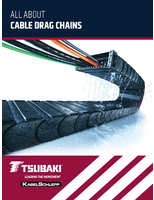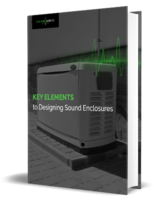Siemens Drive Technologies Division Supplies Integrated Drive Train for the First Series Hybrid Electric Aircraft in the World
Share:
Siemens AG, Diamond Aircraft and EADS are set to present the world's first aircraft with a serial hybrid electric drive system at the Paris Air Show Le Bourget 2011. The aircraft was built by the three partners to test the hybrid electric drive concept. In the future, the technology will cut fuel consumption and emissions by 25 percent, compared to today's most efficient aircraft drives. The Siemens Drive Technologies Division supplied the drive train comprising motor, converter and control electronics and utilized the drives and engineering expertise already gained in industrial areas.
Air traffic accounts for some 2.2 percent of CO2 emissions worldwide. For this reason, aircraft, too, must become more efficient. One possible solution - which Siemens and its partners Diamond Aircraft and EADS are testing in the DA36 E-Star motor glider - is to electrify the drive system. The motor glider, which is based on Diamond Aircraft's HK36 Super Dimona, is the only aircraft of its kind in the world. It is the first to use a so-called serial hybrid electric drive, which has been utilized to date only in cars, as an integrated drive train. The plane's propeller is powered by a 70 kW electric motor from Siemens. Electricity is supplied by a small Wankel engine from Austro Engine with a generator that functions solely as a power source. A Siemens converter supplies the electric motor with power from the battery and the generator. Fuel consumption is very low since the combustion engine always runs with a constant low output of 30 kW. A battery system from EADS provides the increased power required during takeoff and climb. The accumulator is recharged during the cruising phase.
"The serial hybrid electric drive concept makes possible a quiet electric takeoff and a considerable reduction in fuel consumption and emission," said Christian Dries, the owner of Diamond Aircraft. "It also enables aircraft to cover the required long distances."In comparison to the most efficient state-of-the-art technologies now available, the electric drive is to save 25 percent of fuel and emissions. The technology is to be tested initially on small airplanes, but in the long term this drive will also be used in larger aircraft.
The Siemens Drive Technologies Division supplied a low-voltage motor on permanent-magnet basis, a frequency converter and the control electronics. Siemens utilizes the expertise gained in the implementation of the integrated electric drive train in other areas, for example, as main propulsion engine for cruise ships. Ralf-Michael Franke, CEO of the Siemens Drive Technologies Division stated: "This example enables us to demonstrate our competence in the entire drive train. We combine our comprehensive drives portfolio with engineering and industry know-how and adapt the components to the customer's specific application. In this way, we can supply our customers with the ideal drive train which will enable them to efficiently drive a ship and a hybrid bus or fly an aircraft."
The next development step will be to further optimize the integrated drive train. Siemens scientists are currently working on a new electric motor that is expected to be five times lighter than conventional drives. In two years, another aircraft is expected to be equipped with an ultra-light electric drive. The electric motor glider successfully completed its first flight at the Wiener Neustadt airfield in Vienna, Austria on June 8, 2011. The DA36 E-Star will be exhibited at the Paris Air Show Le Bourget in a flight demonstration every day from June 20 to June 26, 2011.
You can find the text on the Internet at: http://www.siemens.com/drives/press
Siemens AG, Diamond Aircraft and EADS are set to present the world's first aircraft with a serial hybrid electric drive system at the Paris Air Show Le Bourget 2011. The Siemens Drive Technologies Division supplied the drive train comprising motor, converter and control electronics and utilized the drives and engineering expertise already gained in industrial areas.
The Siemens Industry Sector (Erlangen) is the world's No. 1 supplier of manufacturing, transportation, building and lighting systems. With its end-to-end automation technologies and a comprehensive array of industry solutions, Siemens is increasing the productivity, efficiency and flexibility of its customers in the industry and infrastructure segments. The sector comprises the six divisions: Building Technologies, Drive Technologies, Industry Automation, Industry Solutions, Mobility and Osram. In fiscal 2009, the Siemens Industry Sector had some 204,000 employees worldwide and achieved sales of Euros34.9 billion. http://www.siemens.com/industry
The Siemens Drive Technologies Division (Nuremberg, Germany) is the world's leading supplier of products, systems, applications and services for the entire drive train with electrical and mechanical components and motion control systems for production machinery as well as machine tools. Drive Technologies serves all segments in manufacturing industry, process industry and energy/infrastructure. The division provides answers to the customers´ key requirements productivity, energy efficiency and reliability. In fiscal year 2010, around 36,000 employees of the Division (September 30), achieved total sales of Euros7.0 billion. http://www.siemens.com/drivetechnologies
Siemens AG
Corporate Communications and Government Affairs
Wittelsbacherplatz 2, 80333 München
Deutschland
Media Relations: Julia Kauppert
Phone: +49 911 895-7952
E-Mail: julia.kauppert@siemens.com
Siemens AG
Industry Sector - Drive Technologies Division
Gleiwitzerstr. 555, 90475 Nuremberg, Germany




